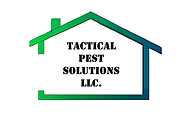Stink Bugs and Western Conifer Seed Bugs: How Invasive Species Impact Your Home and Environment
- Natalie Kelley

- Oct 14, 2024
- 4 min read
At Tactical Pest Solutions, we know how frustrating it can be to deal with unwelcome pests, especially when it comes to insects that seem to come out of nowhere. Two culprits that often invade homes—especially during the fall—are stink bugs and western conifer seed bugs. While these bugs may seem harmless at first glance, they can be part of a much larger problem: the spread of invasive species.
In this blog, we’ll explain the dangers posed by invasive pests, how to tell stink bugs and western conifer seed bugs apart, and what you can do to protect your home and the local ecosystem.
The Danger of Invasive Species
Invasive species are non-native organisms that can cause serious harm to the environment, human health, or the economy. Stink bugs and western conifer seed bugs, both of which have spread beyond their native habitats, fall into this category.
Why Are Invasive Species a Problem?
Environmental Damage: Invasive species often lack natural predators in their new environment, allowing them to multiply rapidly. This can disrupt the balance of the ecosystem, outcompeting native species for food and habitat.
Agricultural Threats: Many invasive insects, like the stink bug, feed on crops and plants. They can destroy fruit trees, vegetables, and other agricultural products, leading to significant economic losses.
Home Invasion: Although neither stink bugs nor western conifer seed bugs are harmful to humans, their presence indoors can become a nuisance. They often invade homes in large numbers when temperatures drop, seeking warmth and shelter.
Understanding these risks highlights the importance of pest control, not just for your home but for the greater good of protecting our local ecosystem.
Stink Bugs vs. Western Conifer Seed Bugs: How to Tell the Difference
While these two bugs may share some similarities, there are key differences that can help you identify and address the problem more effectively.
Stink Bugs
Size & Shape: Stink bugs are approximately ¾ inch long with a broad, shield-shaped body.
Color: They are usually a mottled brown but can have shades of green, gray, or reddish hues.
Behavior: Stink bugs feed on a wide variety of plants, including fruits, vegetables, and ornamentals. They are known for releasing a strong odor when threatened or crushed.
Impact: As an invasive species, stink bugs can cause significant damage to crops and gardens. While they don't bite or sting, their odor and large numbers can make them an annoying presence in homes.
Western Conifer Seed Bugs
Size & Shape: These bugs are a bit longer, measuring about ¾ to 1 inch, with a more slender and elongated body.
Color: Western conifer seed bugs are typically brown with orange markings and have a noticeable leaf-like structure on their hind legs.
Behavior: These bugs feed on the seeds of conifer trees like pines and spruces, which can cause damage to local trees. Like stink bugs, they seek shelter indoors as temperatures drop.
Impact: Though less damaging to crops, western conifer seed bugs can harm the local tree population and become a household nuisance in large numbers.
How to Keep Your Home Bug-Free
Regardless of which species you're dealing with, prevention is key to avoiding infestations. Here’s how you can keep stink bugs and western conifer seed bugs out of your home:
Seal Entry Points: Insects can slip through even the tiniest cracks. Make sure your home’s exterior is sealed by repairing window screens, caulking cracks around doors and windows, and installing door sweeps.
Inspect Your Property: Regularly check your home’s exterior for signs of pests, particularly near windows, vents, and attics, where they’re most likely to enter.
Trim Landscaping: Bugs often use plants and trees as highways to enter your home. Keep shrubs and trees well-trimmed and away from your house.
Contact a Professional: If you’re already noticing bugs indoors or suspect an infestation, it’s time to call in the experts. Tactical Pest Solutions offers comprehensive pest control services to keep your home pest-free year-round.
Why Choose Tactical Pest Solutions?
Tactical Pest Solutions is a family-owned business with deep roots in the community. We know the local environment, and we’re committed to helping our neighbors protect their homes from pests—whether it’s preventing invasive species from taking over or dealing with household nuisances.
Our team is highly trained in integrated pest management and we offer personalized, professional service. When you call Tactical Pest Solutions, you’re getting more than a quick fix—you’re getting a team that cares about your home and the environment.
Stay Connected and Protect Your Home
If you found this blog helpful, be sure to follow Tactical Pest Solutions on Facebook and Instagram @tacticalpestsolutions. We regularly share tips on pest prevention and updates on seasonal pests.
When it comes to keeping pests out of your home, prevention is the best strategy. But when bugs do make their way indoors, we’re here to help. Call Tactical Pest Solutions today for a free consultation and let us take care of the problem for you!
Get in Touch Today!
Protect your home from invasive pests with Tactical Pest Solutions, your trusted local pest control experts. Reach out to us today at (413)636-5867 or 413pestagent@gmail.com and keep stink bugs and western conifer seed bugs at bay!




Comments